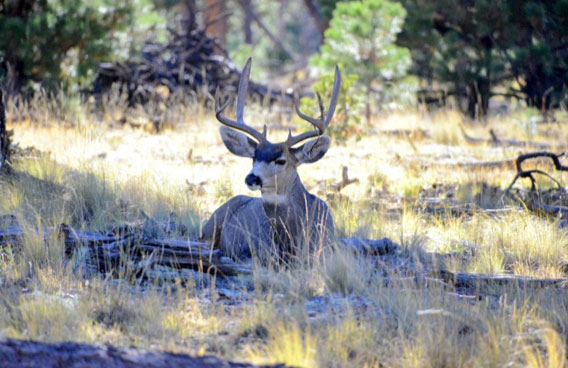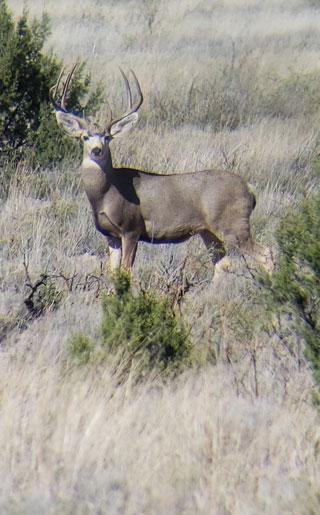Deer Hunting Overview
Whether you define quality deer hunting as having the opportunity to see a lot of deer, or having the opportunity to harvest an older deer with significant antler mass, deer hunting in New Mexico will offer something for you.

The Land of Enchantment offers ample opportunities for hunters to pursue deer. From the Alpine areas of the Sangre de Cristo Mountain Range to the desert floors in southwestern New Mexico, hunters can experience a variety of habitats.
Approximately 36,000 sportspersons hunt deer in New Mexico annually, with approximately 11,000 deer harvested. Mule deer comprise 95% of the deer harvest, but New Mexico also offers unique opportunities to hunt both Coues and Texas white-tailed deer. Except for in a few specific instances, does are not able to be harvested.
License and Hunt Types
New Mexico Department of Game and Fish (Department) offers both public draw licenses and private-land only licenses. Licenses issued through the public draw are valid on legally accessible public land and private land with written permission in the Game Management Unit (GMU) for which the license is issued. Private-land only licenses are only valid on private properties with written permission in the GMU and for the dates specified on the license. Most private-land only licenses are available over the counter from any license vendor.
The Department also restricts weapon types during the season, offering rifle, muzzleloader or archery hunting options through standard and quality hunt types.
Surveys and Population Trends
Deer populations naturally fluctuate between high and low densities over time, and fluctuations can be dramatic. Deer population growth or decline is largely driven by adult female and fawn survival, and changes in these rates can cause populations to fluctuate. Weather, disease, predation and human induced mortality impact adult female and fawn survival; however, availability of quality forbs, shrubs, and concealment cover can lessen or intensify the effect of these individual factors. For more information on issues impacting mule deer populations, visit the Mule Deer Working Group (WAFWA).
Poor conditions for deer population growth in the early-2000s resulted in suppressed deer numbers in several parts of the state. However, improved conditions in recent years led to increased fawn recruitment and female survival. As a result, deer populations in New Mexico are stable with most herds experiencing population growth.
The Department conducts post-hunt, aerial surveys to determine buck to doe (B:D) and fawn to doe (F:D) ratios each winter and to monitor overall population trends. Following the 2018 hunting seasons, the statewide ratios are 45 fawns:100 does and 30 bucks:100 does which are within the Department’s management objectives. These ratios and trends indicate that the statewide population is stable to increasing and hunters may see more deer on the landscape.
In general, deer herds across GMUs in northern New Mexico have higher F:D ratios and are seeing more rapid increases in population sizes.
Although deer populations in southern New Mexico are lower than historical data suggests, F:D and B:D ratios are improving over recent years. Populations in southern New Mexico are stable with some local populations seeing significant increases.


